A push notification is a short in-app, or web-based pop-up message. Push notifications are used for various purposes: from sending system messages and in-app updates to promotions. The key idea of sending push notifications is to provide users with more value and keep them engaged.
Watch this video and learn how to succeed in sending useful push notifications.
Why are push notifications important?
- Attract user attention
- Increase user engagement
- Support users
- Accurately drive traffic
- Increase conversion rate
- Improve communication with users
Let’s consider several factors that make push notifications appealing for many brands around the globe, they:
- Attract user attention. According to the Business of Apps, an average American smartphone user gets around 46 push notifications daily. Although the competition is high, push notifications are crucial in terms of attracting user attention.
- Increase user engagement. The opt-in rate for push notifications on Android devices is 91%, and 44% for iOS devices, this makes push notifications an active channel in terms of outreach.
- Improve communication with users. With the help of such messages, brands create micro communication touchpoints that help to build trusting relationships.
- Support users. Push notifications assist people at every stage of their buyer journey.
- Increase conversion rate. With these messages, you can retain existing users and re-engage inactive subscribers, which results in a more significant number of conversions.
- Accurately drive traffic. Personalized, time-sensitive, and valuable push notifications serve as a proper channel for driving traffic to particular web pages or, in the case of in-app push notifications, to features in the app.
Types of Push Notifications
There are two types of push notifications: in-app and web messages. Let’s have a closer look at each one.
In-app push notification
This type of notification is also called a mobile notification. They are available for the users who downloaded a mobile application and previously opted in to receive updates. This technology helps direct users to specific features, share timely updates, and provide brief instructions regarding the mobile app. The leading platforms for receiving in-app push notifications are Android and iOS.
According to RubyGarage, in-app push notifications show three times better retention rates and an 88% higher level of engagement with the app. Besides, users who opted-in for receiving push notifications launch the application three times more often.
The limits for the length of these messages depend on the mobile operating system. For iOS, it also depends on the type of notification. The maximum length varies from 62 characters for “Banners” to 235 symbols for “Alerts.” For Android devices, the limit is around 84 characters depending on the screen size.
Below is an example of a push notification from an e-commerce application. This particular message incentivizes users to return to their abandoned shopping cart and complete a purchase.
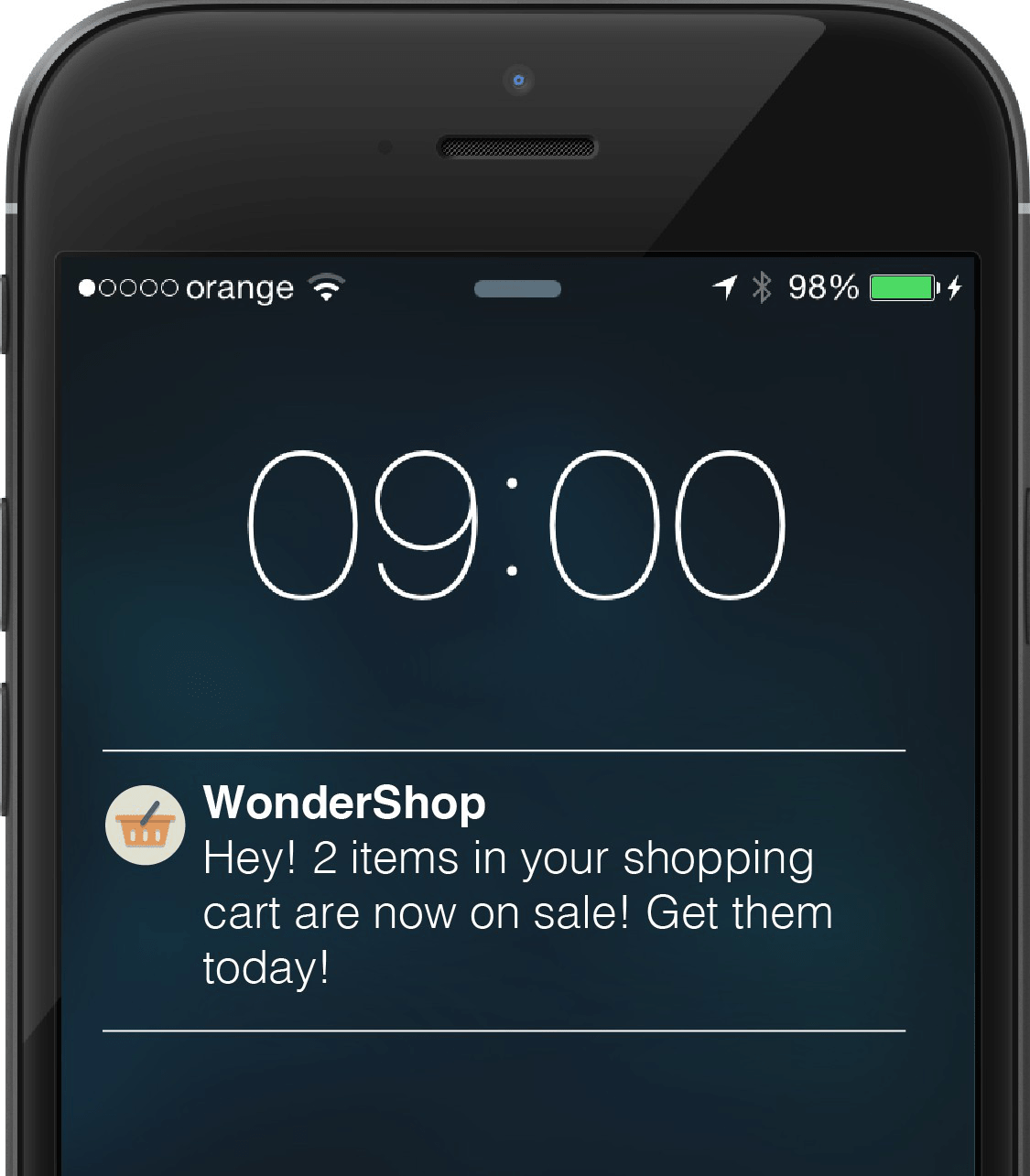
Web push notification
Also referred to as browser push notifications, they appear on a user's desktop or mobile screen. Companies use web push notifications, mainly for marketing purposes. They send promotions and coupons, inform users about new goods in stock, or share educational articles.
With any push notification you want to use, you must get explicit consent to send them from users. Otherwise, any messages from you will be unsolicited, and your business reputation may be damaged. When a user browses a website, a permission request appears as a pop-up at the top of the page. Like in the example from Sephora below, it offers just two options: “Allow” or “Block.”
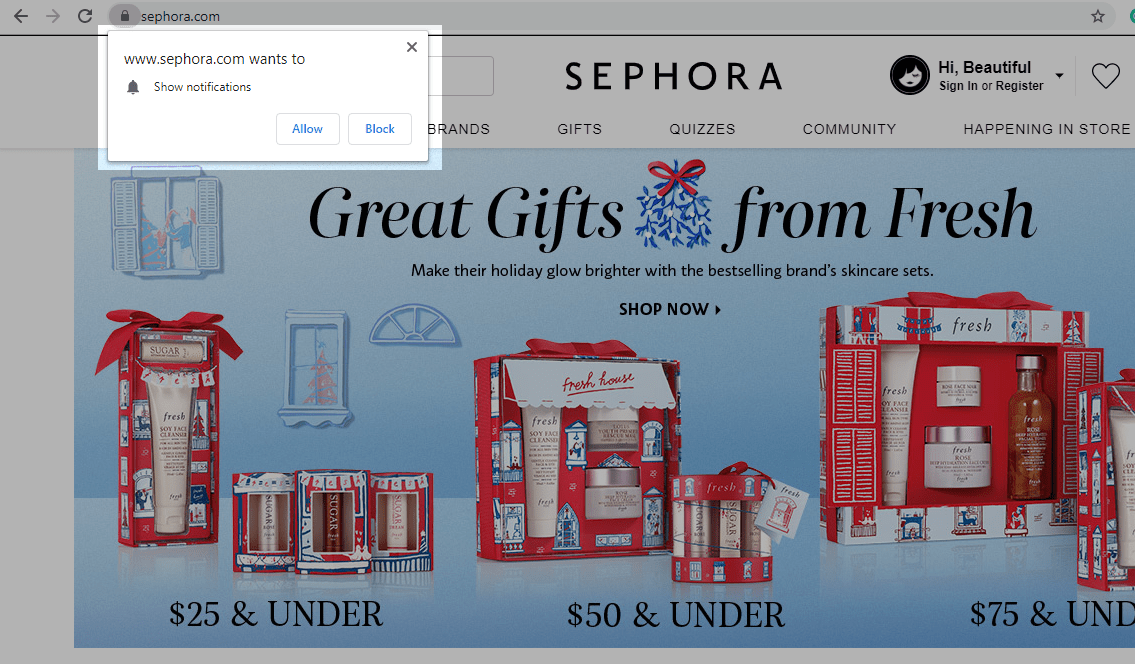
Once a user gives consent, the company can legally send push notifications.
Web push notifications are a great way to promote your products and services in advance of marketing holidays, like on the screenshot below.
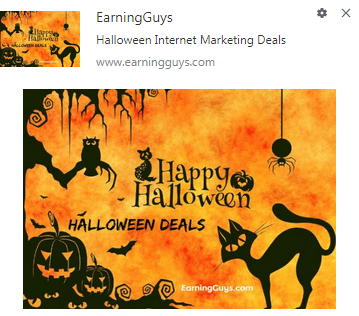
The maximum length of a notification's message depends on the type of device that receives it. For smartphones, the limit is 20-30 characters, while for desktops, it’s up to 50 characters for the title text and 125 characters for the body text.
Big brands with a broad audience use this technology to a full extent, adding images, writing engaging copies, and using personalization to increase their user engagement and revenue.
Send web push notifications, too!
Create campaigns, run A/B tests, and send browser push notifications while SendPulse takes care of the technical side of things. Add one line of code to your website and skyrocket your revenue!
How Push Notifications Work
Let’s find out how both types of notifications work since in-app and web push messages differ.
How in-app notifications work
Let’s get the iOS operating system as an example.
The App sends a permission request to your device. The device hands that request over to the Apple notification server, which sends back a device token. The device forwards the token to the app, which moves it to the backend. After that, the device token is transferred back to the notification server along with the notification itself. Finally, the notification reaches the device, and the user can see it.
Check the scheme below to visualize how in-app push notifications work on iOS devices.
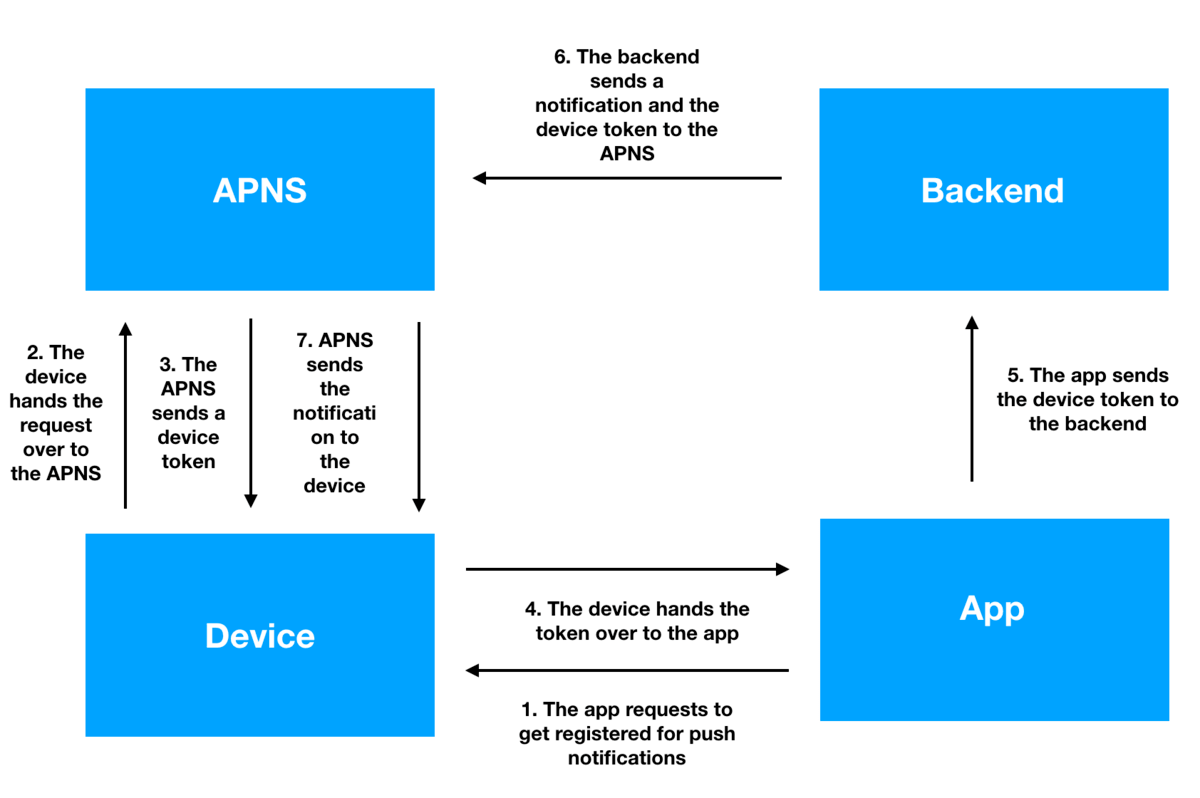
How web push notifications work
Browser notifications work differently. Every browser, like Chrome, Firefox, or Safari, has its push service, so the methods of delivering push notifications may vary.
It works this way: the app server sends the message to the push service that transfers it to the user agent — the browser. After that, the user agent sends a push event to the service worker — a script that a browser runs in the background to allow features that don’t need web pages to operate. Finally, it retrieves the message and displays the notification.
Check out the scheme below to get a better understanding of how web push notifications work.
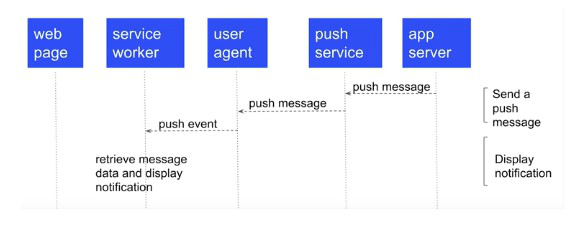
Push Notifications with SendPulse
If you are interested in sending web push notifications, SendPulse is the right platform.
You need to take a few simple steps to get everything up and running. Here they are:
- Add your website. Insert the URL of your site, and set up general settings: choose your website image, decide which action should trigger the request for subscription.
- Add the generated code snippet to your site. Copy and paste generated code to your website template before the closing </head> tag.
- Collect subscribers. Gather subscribers on your website and keep track of existing and new subscribers in the “Statistics” tab in your account.
- Send a web push notification campaign. Choose a list of recipients, fill in the title and body text, and add a web push link.
Here are more detailed instructions on how to do it.
SendPulse allows you to segment the list of recipients, personalize both the title and body text, add a large image, preview the message, and schedule web push notifications sending.
References
- The article “Push Technology” on Wikipedia gives a historical and technical view on the topic.
- The article “Push Notification Best Practices — The Ideal Length” provides actionable tips on how to create notifications that bring conversions.
- The article “Complete Guide to Web Push Notification for eCommerce” by Neil Patel tells how companies can use this channel for marketing.
- The video “Intro to Web Push & Notifications” by Google Chrome Developers contains helpful technical information about how things work on the backend.
Last Updated: 28.09.2024


or